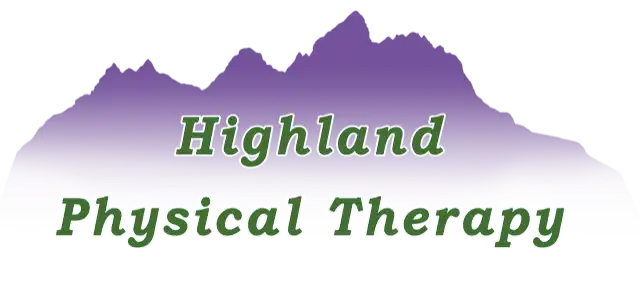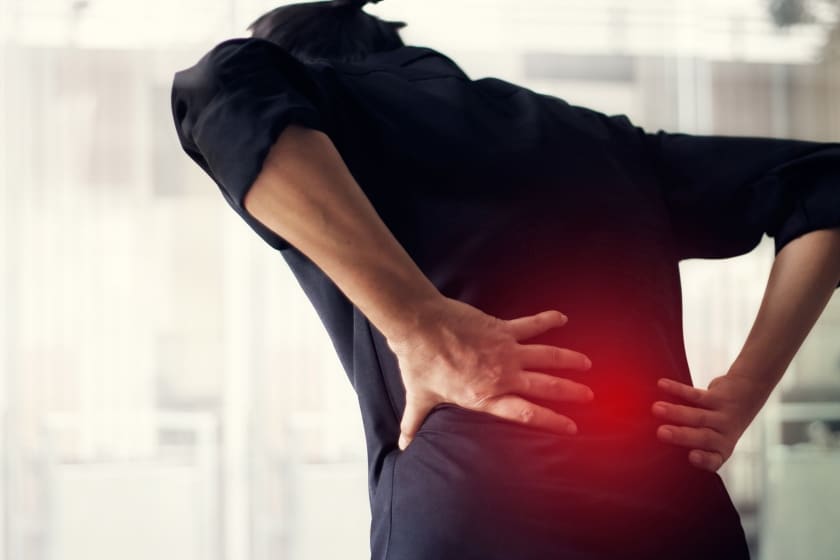Back pain is one of the most common issues people face, affecting millions of individuals worldwide. From occasional stiffness to persistent discomfort, it can make everyday activities — walking, lifting, bending, or even sitting — feel more difficult than they should. While back pain can be frustrating, it doesn’t have to define your life. By understanding the causes, risk factors, and strategies for managing it, you can take steps toward improved mobility, confidence, and quality of life.
At Highland Physical Therapy, we believe knowledge is power. The more you understand about your body, the more proactive you can be in supporting it. This blog will walk you through the essentials of back pain — what it is, why it happens, and what you can do about it.
What Is Back Pain?
Back pain refers to discomfort or stiffness felt anywhere along the spine, from the neck down to the lower back. For most people, pain is felt in the lower back (lumbar region) because this area bears much of the body’s weight and is heavily involved in daily movement.
The intensity can range from a dull ache to sharp, shooting pain. It may last a few days (acute), several weeks (subacute), or continue for months and years (chronic). The key is understanding that back pain isn’t a condition in itself — it’s a signal from your body that something needs attention.
Common Causes of Back Pain
There isn’t just one reason people experience back pain. Often, it’s a combination of factors that build over time.
1. Poor Posture
Spending long hours sitting at a desk, slouching on the couch, or standing without proper alignment can put stress on the spine and supporting muscles.
2. Muscle Weakness
When the core, glutes, or stabilizing muscles around the spine are weak, the back has to do more work than it should, leading to strain and discomfort.
3. Overuse or Strain
Lifting heavy objects without proper technique, repetitive movements, or sudden twists can irritate muscles and ligaments.
4. Age-Related Changes
As we get older, natural wear and tear on the spine — including changes to discs and joints — can contribute to stiffness and discomfort.
5. Sedentary Lifestyle
Ironically, not moving enough is one of the biggest contributors to back pain. Our joints thrive on movement, and when we sit too long, they stiffen.
Who Is at Risk?
Back pain can affect anyone, but certain factors make it more likely:
- People who spend much of their day sitting at a desk or in a car.
- Those who lift heavy items frequently without proper form.
- Individuals with weak core or hip muscles.
- People experiencing high levels of stress (which can cause muscle tension).
- Adults in their 40s, 50s, and beyond, as natural changes in the spine occur with age.
The good news? Risk doesn’t mean destiny. With proactive steps, you can reduce your likelihood of ongoing discomfort.
Everyday Signs to Watch For
Back pain doesn’t always show up as sharp or intense pain. Sometimes the early signals are subtle, such as:
- Morning stiffness that improves as the day goes on.
- A dull ache after long periods of sitting or standing.
- Tightness in the hips or hamstrings.
- Pain that worsens after lifting or bending.
- Difficulty standing tall or walking for long distances.
Recognizing these early signs gives you the chance to act before pain becomes long-lasting.
Why Back Pain Shouldn’t Be Ignored
It can be tempting to brush off back pain as “just part of getting older” or hope it resolves on its own. But ignoring it often leads to more problems. Over time, your body may compensate by moving in unnatural ways, putting added stress on other joints such as your hips, knees, or shoulders.
Taking action early — whether through stretching, strengthening, or working with a physical therapist — can prevent these ripple effects and protect your overall health.
Strategies to Support Back Health
So, what can you do to support your back and reduce the risk of discomfort? Here are practical, everyday strategies:
1. Keep Moving
Your back thrives on gentle, consistent activity. Walking, swimming, or cycling are great options for keeping the spine flexible and supported.
2. Strengthen Your Core and Hips
Strong abdominal and glute muscles reduce the workload on your back. Simple exercises like bridges, planks, or gentle yoga can make a big difference.
3. Check Your Posture
Be mindful of your sitting and standing habits. Keep your shoulders relaxed, your feet flat on the ground, and your spine aligned.
4. Stretch Regularly
Daily stretches for the hamstrings, hips, and lower back can relieve tension and improve mobility.
5. Lift Smart
When picking something up, bend your knees and keep the object close to your body. Avoid twisting your spine.
6. Manage Stress
Stress causes muscles to tighten, especially in the back and shoulders. Breathing exercises, meditation, or even short breaks during your day can help.
How Physical Therapy Can Help
At Highland Physical Therapy, we specialize in helping people understand the root causes of their back discomfort. Physical therapy isn’t just about treating symptoms — it’s about addressing the underlying issues and giving you tools for long-term success.
Some of the approaches we use include:
- Hands-on therapy to ease stiffness and tension.
- Targeted exercises to strengthen weak muscles and support mobility.
- Posture education to help you make small, sustainable changes in daily life.
- Advanced therapies such as dry needling, massage therapy, and red light therapy, which complement movement-based care.
Our goal is simple: to help you feel more confident in your body and return to the activities you enjoy.
Taking the First Step
If you’ve been living with back pain, remember that change is possible. Even if you’ve tried other approaches before, there may be strategies you haven’t explored yet.
At Highland Physical Therapy, we offer a FREE Discovery Visit so you can take that first step without pressure. During this visit, you’ll meet with a specialist who will listen to your story, assess your situation, and help you understand what might be contributing to your discomfort. You’ll leave with a clearer picture of your options — and a plan for moving forward. so you can get clarity and confidence about your next steps—without pressure or commitment.
📍 Visit us at 1951 Bench Road Suite E, Pocatello, ID
📞 Call: (208) 237-2080
Your best years are still ahead—let’s make them active and strong.
More Free Resources:
Enjoy Gardening While Protecting Your Back – Highland Physical Therapy
Upper Back Pain Relief at Home: Simple Exercises for Quick Comfort – Highland Physical Therapy
Find Relief With Our Lower Back Pain Self Care Tips – Highland Physical Therapy


